You Should Always Ask If Your Mashed Potatoes Are Gluten-Free

Grocery store shelves are full of products that claim to be gluten-free. But what about the stuff that doesn’t come with a nutrition label?
Take the humble spud. Are potatoes gluten-free? The simple answer is yes.
By themselves, potatoes are actually low-cal, complex carbohydrates with a solid dose of fiber and vitamin C. However! While potatoes are naturally gluten-free, many prepared versions have hidden gluten, says Katrina Trisko, RD: “Sometimes it’s hard to know if a dish is gluten-free—especially if it’s ordered at a restaurant.”
“Gluten is a protein found in certain grains, such as wheat and barley,” she explains. “It’s not harmful to most people, but some individuals may have a significant allergy to it.” Switching to a gluten-free diet can be great for your health if you suffer from celiac disease (an autoimmune digestive disease which affects the small intestine's ability to absorb nutrients from food in one in 133 Americans) or have a gluten intolerance. But like any diet, it takes a minute to figure out which of your favorite foods are still safe to eat and which ones could wreak havoc on your gut.
When you’re ordering a dish at a restaurant, the kitchen may use ingredients not listed on the menu that contain gluten. Or maybe the meal is prepared in a way that results in cross contamination. That’s why it’s important for people with celiac disease or a gluten sensitivity to ask lots of questions before ordering, and to be extra careful while cooking at home. “If someone with an intolerance accidentally consumes something that has gluten in it, they will experience symptoms, whether it be bloating or gas or discomfort,” Trisko warns.
To avoid tummy troubles, here’s how to make and order your favorite potato dishes, gluten-free guaranteed.
Baked Potatoes
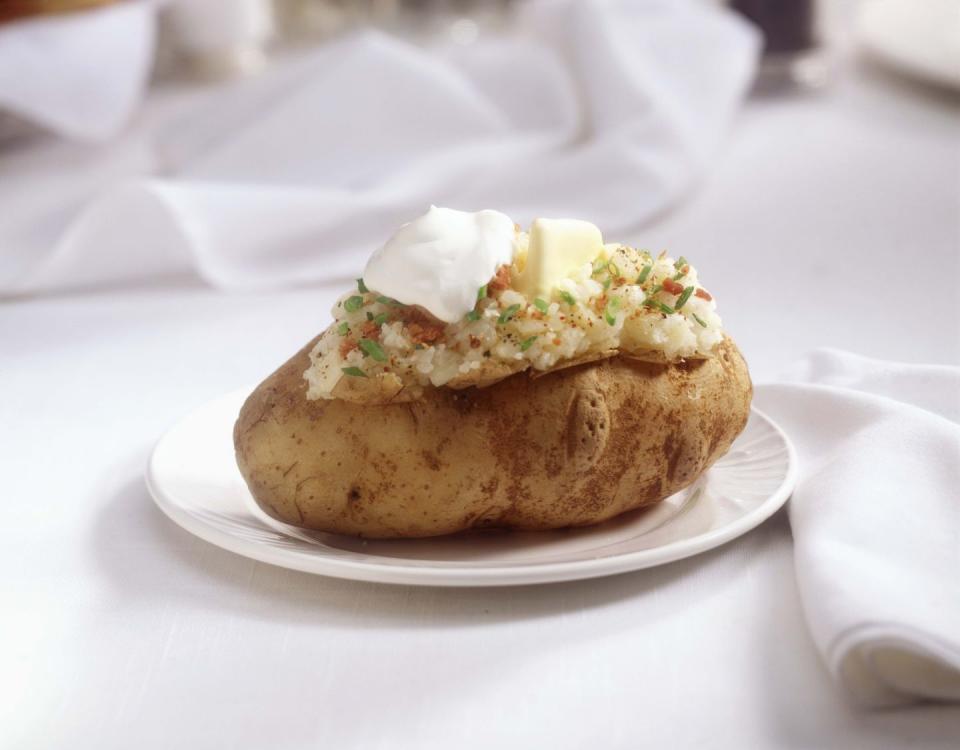
Make them at home: Trisko recommends keeping it a simple: Poke a potato with a fork a few times before wrapping it in aluminum foil. Bake in a 400°F oven for about 45 minutes, or until tender. (Try these 5 protein-packed baked potato toppings.)
Order them: Ask if the kitchen adds any ingredients that could contain gluten, suggests Trisko: “Typically, they’re just tossed into the oven and not mixed with anything that could contaminate it.”
French Fries

Make them at home: Thinly slice potatoes before tossing them in olive oil. Sprinkle with garlic powder, salt, and pepper. Bonus points if you use an air fryer!
Order them gluten-free: If you have celiac disease, Trisko suggests skipping the fries and ordering a baked potato or another safe side. That’s because at most restaurants, fries are cooked in a communal deep fryer. “Most places don’t have dedicated fryers unless they’re gluten-free restaurants,” she continues. “So French fries are likely contaminated.”
Mashed Potatoes

Make them at home: Whip them up with milk (dairy-free or regular), butter, salt, and pepper. Add scallions or bacon for a delicious loaded mashed potato, sans stomachache.
Order them: Some restaurants add flour as a thickener, so double-check with the kitchen before digging in. But Trisko warns that waiters don’t always know every single ingredient that goes into each dish. To be super-safe, she recommends subbing for a baked potato, especially if you have a more severe allergy.
Stuffed Potatoes
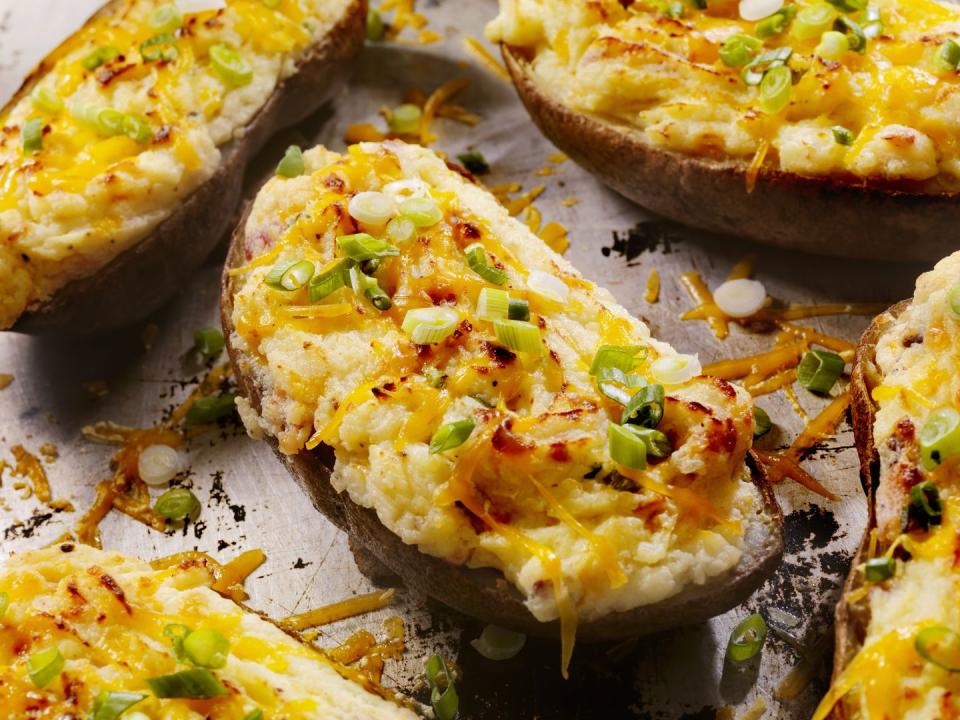
Make them at home: Before you load ‘em up with your favorite toppings, go through the ingredients list to make sure you’re not accidentally including anything that contains wheat or flour, suggests Trisko. (Try this recipe for beautifying stuffed sweet potato.)
Order them: “Ask the waiter it might incorporate an ingredient that could contain gluten,” says Trisko. When in doubt, order something else. Better safe than stomachache.
Potato Skins
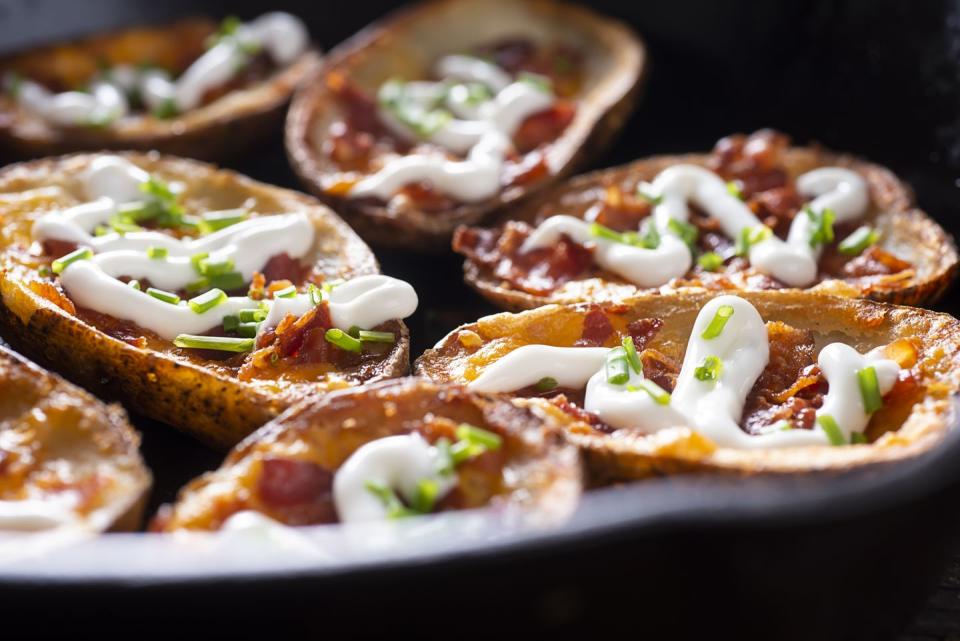
Make them at home: Go wild with cheese and bacon for a crispy, flavor-filled potato skin. If you’re heating up a ready-made frozen side, make sure the package explicitly says “gluten-free” before diving in.
Order them: Trisko warns that if a menu item says it's “crispy,” that usually means it’s fried. (And probably cross-contaminated with other stuff in the fryer.) If you are particularly sensitive to gluten or have celiac disease, skip it.
Potatoes Au Gratin
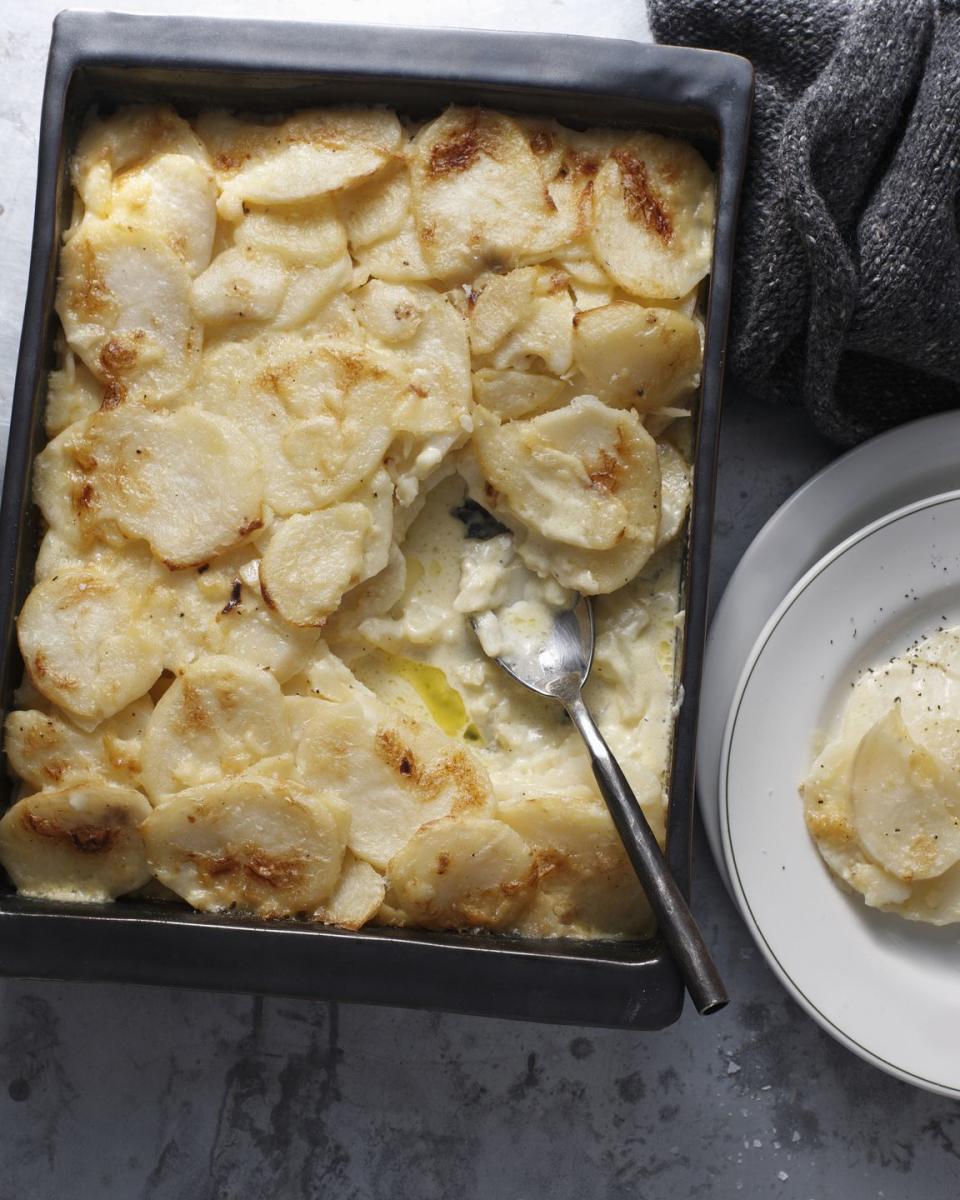
Make it at home: Traditional versions use flour as a thickening agent, so seek out an explicitly gluten-free recipe. You can still achieve that creamy and comforting taste with a few tweaks, like adding extra parmesan cheese for a crispy finish.
Order it: Avoid this dish at restaurant unless you’re dining at an entirely gluten-free eatery. When in doubt, go for an alternate side like a stuffed or baked potatoes.
Potato Bread
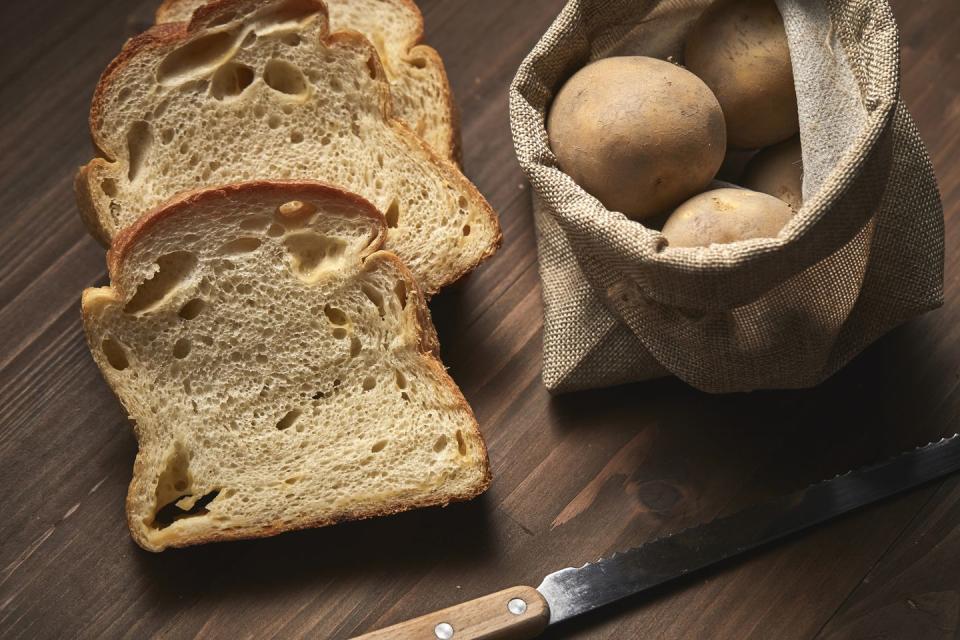
Make it at home: Potato bread actually just…regular bread made with a blend of wheat and potato flour or potato starch, says Trisko. Double check to ensure that your recipe is truly gluten-free before tying on your apron.
Order it: Because this is a wheat-based bread, it contains a significant amount of gluten. Skip it.
What Are Potato Flour And Potato Starch, Anyway?
Don’t let the words “flour” or “starch” fool you here: Both potato flour and potato starch are 100 percent gluten-free. If you see these listed on a recipe or in an ingredients list, they are safe to consume.
You Might Also Like

